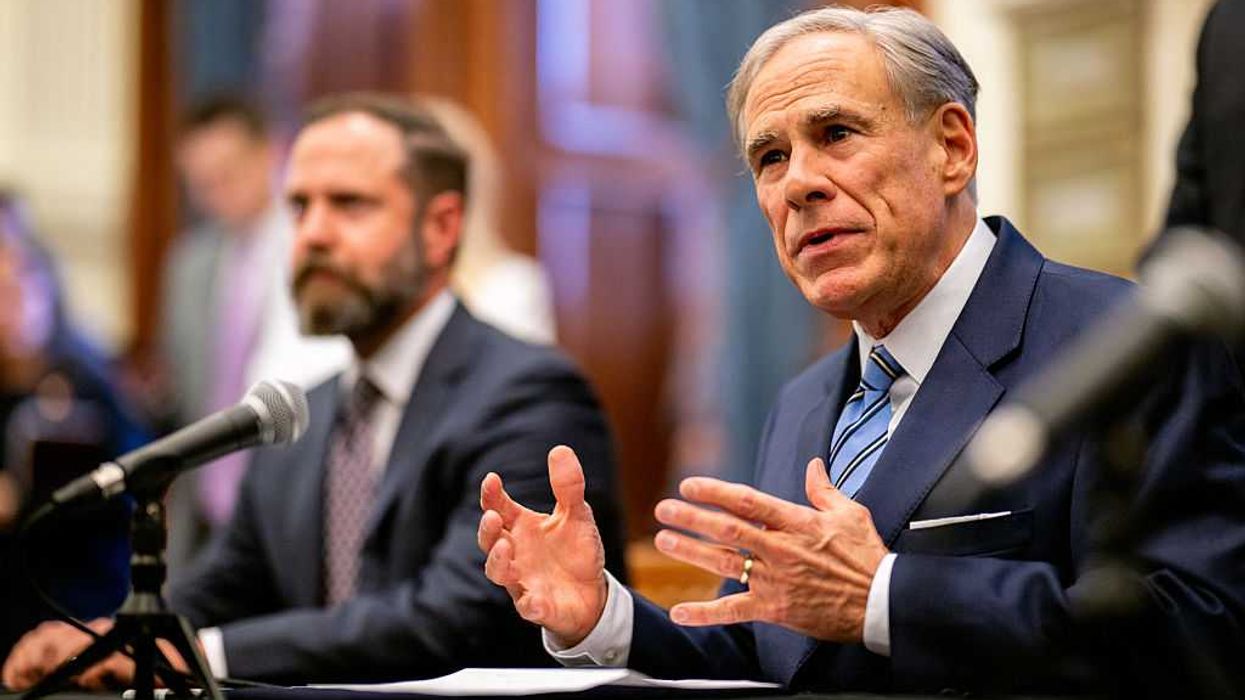Last week, 21-year-old Jack Teixeira was arrested at his mother’s home in North Dighton, Massachusetts after he leaked dozens of "top secret" intelligence documents through a Discord channel with 20 to 30 members. The documents contained sensitive intelligence pertaining the war in Ukraine, the U.S.'s involvement in training Ukrainian troops, and other intelligence about U.S. allies, such as Israel, South Korea, and others.
Since Teixeira's arrest, Glenn has been asking the glaring question that the media refuses to address: did Teixeira act alone? Glenn brought multiple defense experts on his show this week to get to the bottom of how a 21-year-old National Guardsman could have possibly accessed these documents with his clearance.
Glenn's guests included former head of intelligence Kash Patel, Glenn's head researcher and former defense intelligence analyst Jason Buttrill, and The Intercept founder Glenn Greenwald. Each of Glenn's three guests demonstrated that the current media narrative has glaring holes and many more questions not only need to be answered, they need to be asked by our media in the first place.
With all of the news circulating around this story, it is often difficult to discern the core points you need to know to analyze the story for yourself. Below you will find the top theories behind the leaked Pentagon documents explained so YOU can come to your own conclusion. But first, some background.
Was Teixeira's security clearance sufficient to get him access to the documents?
In short, no.
Teixeira did hold "top secret" security clearance. However, this is not unique. In fact, millions of people within the defense and intelligence community possess "top secret" clearance. As Glenn Greenwald pointed out on Glenn's radio show today (4/20/2023), our government abuses its ability to deem relatively anything "top secret." For example, when Greenwald was investigating the Snowden documents, he recounted how even parking tickets and other "banal information" was labeled "classified" or "top secret." Labeling even seemingly insignificant documents "top secret" makes it a felony to publicly share that information, protecting the government from the probing eyes of the press.
Since millions of people within the defense and intelligence communities are given "top secret" clearance to access basic information, the defense created "top secret +" clearance for truly sensitive information. Glenn's head researcher and former defense intelligence analyst, Jason Buttrill, explained that the two types of "top secret +" clearance are "Sensitive Compartmented Information (SCI)" clearance and "Special Access Program (SAP)" clearance.
Buttril explained that Teixeira would not only need either SCI or SAP access, but he would also need a "need to know" permission to access that information specifically. Teixeira had none of these clearances, so it is relatively impossible that he would have been able to access these specific documents on his own.
How would someone get access to the leaked documents?
The New York Times simply reported that Teixeira used JWICS to access the classified documents. However, this is a blatantly generalized assessment of what is actually required to access the caliber of documents that were leaked. As Buttrill told Glenn, JWICS is the security network for defense agencies like Verizon, which is a network for millions of cell phone users. Most defense employees have access to JWICS, but as Kash Patel told Glenn, less than 0.5 percent of these people have access to the types of documents Teixeira accessed. In short, we need more information than what the New York Times is currently investigating.
So how would one of these 0.5 percenters get their hands on the leaked classified information? First, Buttrill said, they would need either an SCI or SAP clearance. Second, they would not only need knowledge that these documents actually existed, but they would know where they were located within the JWICS system. Both facts are kept secret except for those who are given a "need to know" clearance to the documents.
Patel told Glenn the following helpful illustration. Imagine if JWICS were a huge mansion with numerous rooms and chambers. Even if millions of people had the front door key, only a select few could access certain rooms. Even fewer would know the location of the family jewels and possess the key to unlock the safe. Teixeira possessed the key to open the front door, but he would not have known the location of the documents within the JWICS system nor have the SCI and SAP clearance to access them. So how did Teixeira access them?
How did Teixeira get the documents? Theory 1
Given the fact that Teixeira did not have the clearance to access the leaked documents, there are two leading theories to explain what happened.
The first theory is the "screw-up" theory. As Buttrill said on Glenn's show, someone with SCI or SAP clearance could have theoretically left his/her computer open with the documents visible, giving Teixeira the opportunity to view and print the documents. However, as Buttrill pointed out, there are several issues with this theory.
The first glaring issue is that there would have been a record of someone printing those particular documents from the person's computer. Buttrill said there is a record for every print job, particularly regarding documents with that level of security. The authorities would have easily been able to locate Teixeira and the owner of the computer. However, this does not seem to be the case: authorities said they located Teixeira from particular details in his posted online images, not through any print record.
Moreover, the second glaring issue is that, if this theory were true, the person who left highly classified documents open on their computer without their supervision is liable for prosecution. The fact that someone else hasn't been arrested either means the "screw up" theory isn't true, or that the true responsible party is being covered up by their respective agency.
If this theory is true, then the lesser of two evils would follow: namely, that our intelligence system is broken and is vulnerable to leaks. Patel said he hopes this is the case, but believes the second theory is much more plausible.
How did Teixeira get the documents? Theory 2
The second and more plausible theory is the "co-conspirator" theory, alleging that someone with SCI or SAP clearance aided Teixeira in getting access to the leaked documents. If the "screw-up" theory were true, there would be direct documentation linking Teixeira to the computer via the printer or some record of data exchange. As Patel suggested:
Somebody, either a DoD or someone in the intelligence community, either wanted this information out, or [Teixeira] found someone who wanted the information out, like he did and helped him with that process, and access.
This means that either Teixeira found someone within the DoD to give him the documents, or someone within the DoD wanted the documents leaked and used Teixeira as a scapegoat. If the latter is the case, then Teixeira is a pawn in the DoD's strategic plan.
What was the motive behind the leak?
There are several different theories speculating the motive behind the leak. Patel said:
Somebody either wanted this information out ... or our classification system is so broken and so destroyed that a rookie can walk in and harness our nuclear secrets.
Patel further said the main goal of the leak was to show the information in Ukraine, while the other intelligence leaks were aimed at throwing people "off the tracks" of the true motive. This further corroborates the theory, Patel said someone else with more knowledge about the Ukrainian conflict was involved.
Glenn Greenwald, on the other hand, said the "screw-up" theory is still possible alongside the co-conspirator theory, stating:
You would be surprised with how sloppy the U.S. government is, even with classified information.
However, Greenwald criticized the media's lack of transparency and curiosity over the investigation, accusing "media corporations of serving the U.S. security state above all else." Greenwald, Patel, and Buttrill all agreed there is much more to the story than meets the eye. The media needs to stop doing the bidding of the intelligence community and begin doing their job: investigating the truth.

 Harold M. Lambert / Contributor | Getty Images
Harold M. Lambert / Contributor | Getty Images
 Adam Gray / Stringer | Getty Images
Adam Gray / Stringer | Getty Images Anadolu / Contributor | Getty Images
Anadolu / Contributor | Getty Images Brandon Bell / Staff | Getty Images
Brandon Bell / Staff | Getty Images